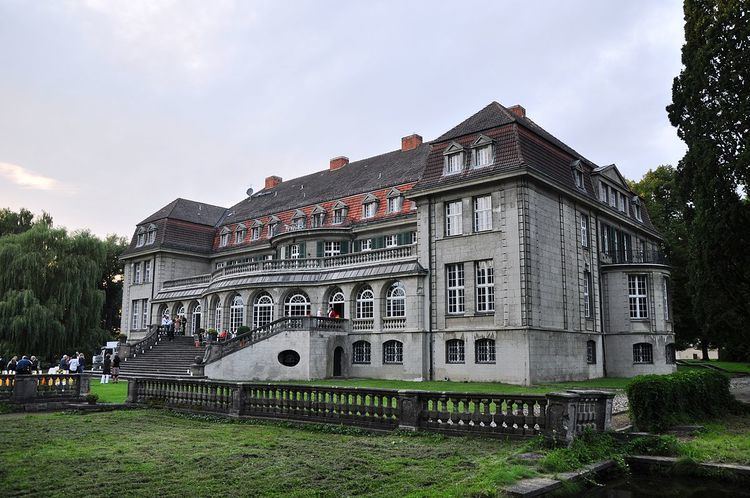 | ||
GDR-Children of Namibia are a group of more than 400 Black Namibian children that grew up in GDR. During the liberation struggle of SWAPO against South African occupation of Namibia they were relocated from 1979 onwards from various refugee camps to GDR and only came back in 1990 at the onset of Namibian independence. They were mostly unprepared for their return.
Contents
Most „GDR-Children“ are part of Freundeskreis ex-DDR (FeD, Friends of the former GDR) organization. The official language of the organization is Oshi-Deutsch, a mixture of German and Oshivambo.
History
During the liberation struggle, SWAPO solicited humanitarian assistance from around the globe, which they got in the form of education, health, arms and funds. Between 1960 and 1980 hundreds of Namibians came to GDR and were offered academic education. In 1978 many wounded soldiers came from Cassinga to GDR for medical treatment. GDR offered „Solidarity Consignment“ to South West Africans. Sam Nujoma turned again to the GDR and other socialist countries after the Cassinga massacre and asked again for children to be taken out of the SWAPO-Refugee camps for safety, support and for caring for the children.
On 12 September 1979 Sam Nujoma request was granted by SED's Central committee. Jagdschloss Bellin, a hunting castle in Bellin, a village ten kilometers south of Güstrow (today in Mecklenburg-Vorpommern) was identified to be a safety home for the children.
Arrival
On 18 December 1979 the first group of about 80 children arrived in the snowy winter in Berlin. Some were between the ages of 3 to 5 years old. Besides medical and general support it was agreed that German should be the medium of instruction for them in Pre-Primary and Primary School. Between 1979 and 1988 a total of 430 black children came to GDR. Due to inadequate space, the groups of 1979 to 1985 were moved to the School of Friendship in Staßfurt.
The children were mostly from the cohort of pre-school war orphans. Some of them were selected from families of SWAPO functionaries, reportedly without the consent or consultation of their family members. The government of GDR saw the education of these children as one of their contributions to "World Revolution".
The first group of children that went in 1979 and were called later the „79er“ spent eleven and a half years in the GDR. They went to school and learned German like their mother tongue and basically grew up in a German life of style. German and Namibian teachers tried their level best to sustain the Namibian culture with the teaching of traditional dances, Oshivambo songs, and traditional food recipes. In the GDR, social and tertiary education was of utmost importance for the children. The education for the SWAPO-Pionier aimed at placing most of these youths in elite leadership positions for the development of the country once Namibia achieved its independence.
Repatriation
Few months after the fall of the Berlin Wall in November 1989 Namibia attained its independence. The event culminated in the expulsion of Namibian children and teachers from GDR to Namibia.
There is a number of theories regarding the unexpected repatriation and at that point, an established parent committee requested for the return of these children, as a symbol for a new Namibian government and to nullify the rumours that the SWAPO-Children were kidnapped. The repatriation of these children took place from 26–31 August 1990 and as home comers they landed in country alien to them. The consequence was cultural shock: Though these youth were seen by the Namibian people as „Germans“ the Namibian German people regarded them to be „amazingly German“, but still as black people.
For the „GDR-Children of Namibia“ it meant a conflict between two home countries, and between two cultures and a fight for two identities. Many of them returned into poverty and struggle instead of the expected leadership positions.
Aftermath
In the process of the home coming to Namibia the concept „Ex-GDR-Children“ was unintentionally used and the talk of „Ossis of Namibia“, they regarded themselves sometimes as „Ossi“ . The Ossiclub of Windhoek that existed up to 2007 was a place where they regularly met, and supported its naming convention. Until today the concept „GDR-Children“ is a meaning that outgrew them a long time. While some of them went to good schools in Namibia and still command the German language barrier in a country with a strong German influence, they stand having good career opportunities. Unfortunately some still go through difficulties of the search for their own home, culture and identity.
Today most of the Ex-GDR-Children describe themselves as „Omulaule“, a word in Oshivambo that means „black“ or „black Man“. Their organization continues to carry the name Freundeskreis ex-DDR, but it is currently largely dormant.
Current Situation
Since end of 2009 a group of Omulaule came under the spotlight through bad behaviour especially in Windhoek. They started collecting money in the form of donations for an apparent historical expedition from German tourists. Such expedition or project was never planned.
